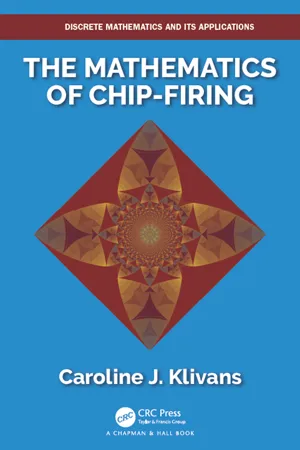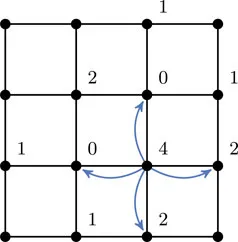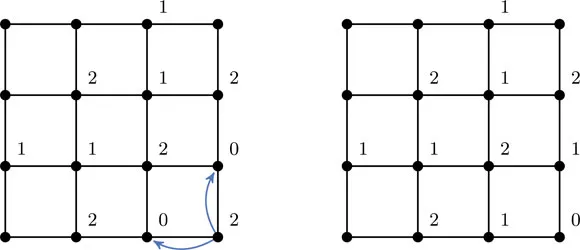
- 296 pages
- English
- ePUB (mobile friendly)
- Available on iOS & Android
The Mathematics of Chip-Firing
About this book
The Mathematics of Chip-firing is a solid introduction and overview of the growing field of chip-firing. It offers an appreciation for the richness and diversity of the subject. Chip-firing refers to a discrete dynamical system — a commodity is exchanged between sites of a network according to very simple local rules. Although governed by local rules, the long-term global behavior of the system reveals fascinating properties.
The Fundamental properties of chip-firing are covered from a variety of perspectives. This gives the reader both a broad context of the field and concrete entry points from different backgrounds.
Broken into two sections, the first examines the fundamentals of chip-firing, while the second half presents more general frameworks for chip-firing. Instructors and students will discover that this book provides a comprehensive background to approaching original sources.
Features:
- Provides a broad introduction for researchers interested in the subject of chip-firing
- The text includes historical and current perspectives
- Exercises included at the end of each chapter
About the Author:
Caroline J. Klivans received a BA degree in mathematics from Cornell University and a PhD in applied mathematics from MIT. Currently, she is an Associate Professor in the Division of Applied Mathematics at Brown University. She is also an Associate Director of ICERM (Institute for Computational and Experimental Research in Mathematics). Before coming to Brown she held positions at MSRI, Cornell and the University of Chicago. Her research is in algebraic, geometric and topological combinatorics.
Frequently asked questions
- Essential is ideal for learners and professionals who enjoy exploring a wide range of subjects. Access the Essential Library with 800,000+ trusted titles and best-sellers across business, personal growth, and the humanities. Includes unlimited reading time and Standard Read Aloud voice.
- Complete: Perfect for advanced learners and researchers needing full, unrestricted access. Unlock 1.4M+ books across hundreds of subjects, including academic and specialized titles. The Complete Plan also includes advanced features like Premium Read Aloud and Research Assistant.
Please note we cannot support devices running on iOS 13 and Android 7 or earlier. Learn more about using the app.
Information






Table of contents
- Cover
- Half Title
- Title Page
- Copyright Page
- Dedication
- Table of Contents
- Preface
- I Fundamentals
- II Extensions
- List of Figures
- Bibliography
- Index